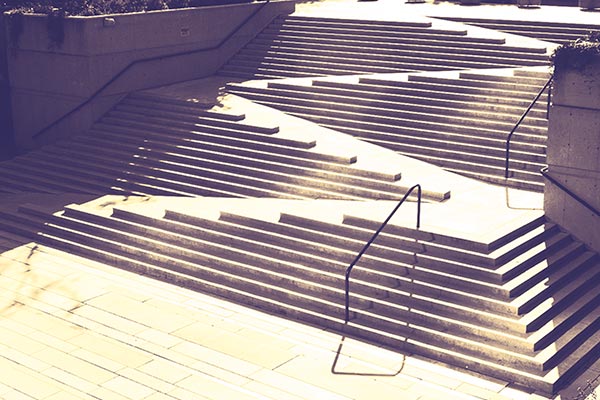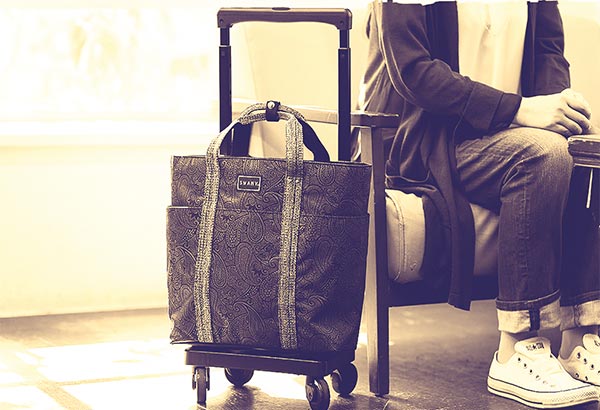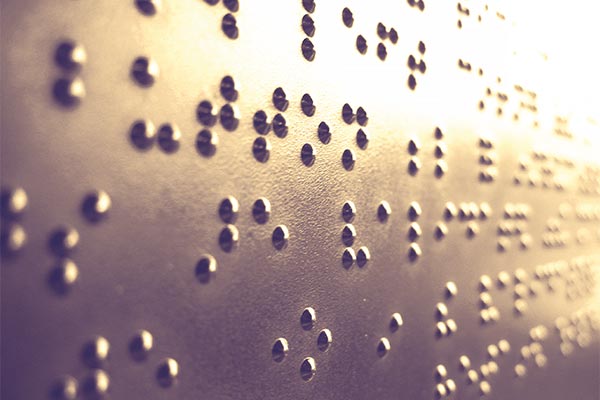Subtotal: $
Checkout-

Poem: “Consider the Shiver”
-

Poem: “No Omen but Awe”
-

Poem: “So Trued to a Roar”
-

Letters from Readers
-

Editors’ Picks: Dirty Work
-

Editors’ Picks: Millennial Nuns
-

Editors’ Picks: Directorate S
-

Letter from Brazil
-

Peace for Korea
-

Flannery O’Connor
-

Covering the Cover: Made Perfect
-

Calling from the Edge
-

The Disability Ratings Game
-

The Way Home
-

The Beginning of Understanding
-

Time for a Story
-

The Island of Misfit Toys
-

A More Christian Approach to Mental Health Challenges
-

Made Perfect
-

Mary’s Song
-

The Art of Disability Parenting
-

When Merit Drives Out Grace
-

Hide and Seek with Providence
-

Unfinished Revolution
-

Falling Down
-

The Hidden Costs of Prenatal Screening
-

The Baby We Kept
-

The World Turned Right-Side Up
-

The Lion’s Mouth
-

How Funerals Differ
-

One Star above All Stars
-

Stranger in a Strange Land

Spaces for Every Body
What would a world designed for humans with and without disabilities look like?
By Leah Libresco Sargeant
December 9, 2021
Adaptive technology and design make bridges. Ramps sloping gently down from a door, spaces set aside at the airport for nursing mothers, eye-tracking cameras that translate the smallest movements into computer-spoken words – these adjustments make the world more accessible to people who might otherwise be excluded.
Adaptive technology also creates a border. It indicates who is not expected to be a user of a tool, a space, a voice. Adaptive design is the complement to design for the expected person, the typical person, the person society readily recognizes as a full person. In two recent books, What Can a Body Do: How We Meet the Built World (Sara Hendren) and Making Disability Modern: Design Histories (essays edited by Bess Williamson and Elizabeth Guffey), the authors catalog the ways society is shaped to be exclusive, and how people who are initially excluded reclaim the space and dignity they are due.
Hendren, an artist who teaches design for disability at Olin College of Engineering, opens her book with a design challenge she posed to her students: Take Amanda, an art historian who is a Little Person, standing just over four feet tall. In her work as a curator, she travels and gives talks at museums, and she wants a customized lectern that suits her stature. She lays out a full set of design constraints: she wants to be able to carry and set it up by herself, it has to be strong enough to support a laptop, and it has to be robust enough for repeated use.
For a certain kind of designer, Amanda’s request is superfluous. There is already a simpler solution – she can stand on a box. Indeed, many speaking venues keep a box on hand, not for Little People, but for women, as my parish did for women lectors who otherwise wouldn’t quite reach a podium designed with the median man’s height in mind. It was a solution Amanda had repeatedly relied on, and one she decided she was finished with. As Hendren explains, “She wanted to be able to do the speaking her job entailed without a device that required her to enact the repeated awkwardness of bringing her body to the dimensions of a room at odds with her physicality.”
There is a profound gap between adaptive design that is intended to put an atypical or disabled user in the position of the typical user and one that treats her as a guest in her own right, anticipated and welcomed as she is.

An outdoor staircase in Robson Park, Vancouver, incorporates a ramp for wheelchairs and strollers. Image public domain
One woman Hendren profiles, Cindy, is a quadruple amputee who has “some broad grasping function on one side, but no complete fingers at all.” Like many people with disabilities, she has become a designer by necessity. She has the benefit of access to a state-of-the-art prosthetic, a black myoelectric hand with dozens of preprogrammed grip patterns for its delicately articulated fingers. But most of the time she leaves it in a drawer.
The drawer handle is adorned with one of the cable ties she has attached all over her house. While a conventional drawer pull anticipates a conventional hand, Cindy has added fixtures that are suited to what her hand can do. Most of her adaptations are cheap and “would never merit coverage in the shiny ‘innovation’ pages of the tech magazines.” But each meets Cindy where she is now rather than being aimed at returning her to the same ways in which she moved through the world before her amputations.
Adaptive technology that aspires to fully restoring “typical” use can suit some disabled users. But, as Caroline Lieffers points out in “Artificial Limbs on the Panama Canal,” in Making Disability Modern, it is also a way of deciding what ways of being society is willing to count as human, and what it counts as harm. In the first decade of the twentieth century, the Panama Canal project contracted with A. A. Marks, a manufacturer of prosthetics, to provide limbs for men injured at work there. The blithe advertisements juxtaposed the limbs and the canal as two forms of the triumph of human ingenuity over nature. What explosives and machinery destroyed, A. A. Marks prosthetics could replace.
Lieffers compares this response from canal administrators to “what scholar Jasbir Puar has, in a different context, labeled the imperialist’s ‘right to maim,’” which they complemented “with a medical-technological ‘right to fix’ on terms most favorable to their metropolitan interests.” The limbs were (usually) sufficient to return men to work, and any other suffering was outside the scope of what the canal administrators thought of as their duty to redress.
The Department of Defense–sponsored Warrior Games live in a similarly uneasy space. The annual event “celebrates the resiliency and dedication of wounded, ill, and injured active duty and veteran US military service members,” and the remarkable athletic performances are a testament to the determination of the participating soldiers. But the celebration also serves the story that injuries are fixable and transcendable. It deflects questions of whether these sacrifices were demanded in a just cause. When a sprinter runs on a carbon-fiber blade, the prosthetic is assisting a certain narrative, as well as a certain kind of excellence.
For some people with the need for assistance, telling the story of a return to normality is as essential as the physical support a device can provide. Cara Kiernan Fallon, in her essay “Walking Cane Style and Medicalized Mobility,” explores how the common use of canes and walking sticks as fashion statements in the late nineteenth century created a blurry boundary between the able-bodied and the disabled. When everyone carried a walking stick, it was easier to age gracefully, gradually putting more weight on the stick for support. There was no harsh, visible transition to a walker or a medicalized cane – neither of which has the whimsy or personality of a walking stick.
In one of the final essays of Making Disability Modern, “Designing the Japanese Walking Bag,” collection editor Elizabeth Guffey discusses her own experience with a kind of successor to the cane, similarly invisible in its ubiquity: the Swany bag. Businessman and polio survivor Etsuo Miyoshi noticed how much he felt steadied by a rolling suitcase, and designed the Swany bag as a mobility aid that appeared to be a similar bag. In order to launch the product in 1999, he was open about his own struggles, appearing in advertisements at a time when disability in Japan was often a private, shameful fact.

The Swany bag acts as an unobtrusive mobility aid. Photograph from swany.co.jp
His openness helped the bag find its users, many of whom became amateur designers, speaking from their own need and prompting the company to add useful features like a wheel brake, a small fold-out seat, and a way to slim the profile of the bag for crowded interiors. But some of the feedback was less about users’ struggles with the bag and more about their struggles with the society they moved through. “Swany’s user feedback also alluded to perceptions of disability and fears of marginalization,” Guffey writes. “Too often, customers wrote, ‘in a quiet residential area, the sound of the casters is loud.’” The already quiet wheels were dampened into near-silence. But, as Guffey points out, it was implausible that the low rattle of a wheel was truly disruptive: what users feared was that their presence was. They wanted a bag that would let them pass through, invisible and unremarked.
Assistive technology design can take into account these desires, but there is always something bitter about satisfying them. The pressure the visibly disabled face to “pass” as typical is real, but it is an unjust demand. It may relieve strain on an individual to help her hide, but the fear or disgust the able-bodied feel is poisonous to their own souls and requires purgation and healing, even if it is not outwardly expressed.
And, of course, not everyone can succeed in passing as independent or able-bodied. In another essay, “The Ideology of Designing for Disability,” Guffey follows the work of Selwyn Goldsmith, a research architect in Norwich, England, in the mid-twentieth century. He was familiar with the accepted best practices for design for the disabled, but, as he began interviewing the individual disabled people of his city, he found many of them were left out of the picture of the “typical atypical” person.
Guffey writes, “Of the almost three hundred people he initially interviewed, Goldsmith found that only six resembled [the] typical wheelchair user, that is, people who were ‘able to go out and use public buildings independently.’” Instead, the wheelchair users he met often relied on caregivers for help. A ramp-accessible building and toilet – even one wide enough for a wheelchair – was still unusable for them if it didn’t have space for two people to collaborate.
Goldsmith’s interviews informed the substantial revisions he made to his second edition of Designing for the Disabled in 1967. He rejected an American-popularized ideal of designing in order to allow the disabled to maneuver independently. Instead, he wanted to be able to anticipate disabled users as tightly enmeshed in a social fabric of support. Meeting their needs meant leaving room for the people they depended on. He no longer wanted to seamlessly integrate facilities for the disabled into typical facilities, but to be unafraid to label them visibly and call attention to their difference. He saw this not just as a design philosophy, but as a moral question on “evaluation of human worth.”
Hendren finds similar themes underlying the stories and designs she profiles. Dependence “always implicates far more than one person,” she writes. “Dependence creates relationships of necessary care – care that may be undertaken by individuals, families, local communities and municipal organizations, churches and mosques and temples, states or nations, or all of those in some mix.” Being part of this tapestry of needs and care is not limited to the people regarded as disabled. As Hendren writes, “states of dimensional dependence from our infancy through the end of life might be the central fact of having a body, or rather being a body.”

Instructions are repeated in braille on a ticket-validating machine at a train station in Portland, Oregon. Photograph by saramarie/flickr
The experience of disability and dependence is not foreign to any of us, no matter how able-bodied or well-accommodated we are at present. Journalist Sara Luterman, who specializes in disability policy, politics, and culture, sees “independence as an illusion.” I asked her how she helps her readers find points of connection to very different life experiences. Though we all fall somewhere on the spectrum of dependence, the temporary need of a pregnant mother may feel very different than the experience of growing up with a congenital limb difference, which is itself very different from finding one’s way into Deafness late in life due to Ménière’s disease.
Luterman starts with a simple proposition: “Everyone has the same fundamental needs, more or less. We all need food, we all need shelter, we all need social connection. We all need to feel like our lives are meaningful; we all need to feel pleasure sometimes.”
Her goal isn’t to ask the reader what it would be like to be the person at the heart of a reported story, but to imagine what it would be like to be denied what disabled people are denied. “It’s not imagining what it would be like to be intellectually disabled,” she tells me, “but what it would be like to be paid less than minimum wage.”
It helps simply to see the world built around us as not wholly given, but as the result of the choices made by specific, limited sets of people. As a parent, I return to the image of a set of enormous furniture constructed by artists Michael Seo, Cindy Jian, and Marie Applegate, which gave adults the perspective of children moving through a world not constructed to their scale. You might have the pleasure of walking under a table (and seeing an unexpected place for decoration) but you also suddenly find yourself unable to join others for a meal without a boost. Most of the built world excludes children’s exploration and assumes they are being supervised and assisted by an adult.
In both What Can a Body Do? and Making Disability Modern, there are examples of other liminal spaces, where a “typical” person can enter an environment that is centered around the needs of a different experience. Near Gallaudet University, Hendren visits a “Signing Starbucks,” which carries the principles of DeafSpace architecture over into the “regular” world. Everything is laid out to facilitate the lines of sight that signers depend on. The baristas are ready to accommodate Hendren and other non-signers, but it is still a place where her defaults are foreign – an embassy from another world.
Two Dutch communities for the disabled operate spaces where their residents touch the outside world. De Hogeweyk is a village catering to patients with dementia, and Het Dorp is a town designed for the physically disabled. In a small business district in Het Dorp and in the restaurant of De Hogeweyk, people native to the “typical” world can enter, mingle, and step through a portal into an alternate world – a world that takes a different human experience as the pattern for “standard.”
These spaces offer immersion; the two books are travelers’ guides. Both help all of us, whatever our specific needs, to be more attentive to the work of translation and adaptation required to enter the allegedly public sphere. Each of us can look at the places where we are already well accommodated. We can ask where our community requires us to do the work to construct the comfort others enjoy effortlessly. We have the opportunity to smooth the way for the friends and neighbors we have, and to feel the absence of the potential friends or neighbors who are excluded by the communities we built.
Already a subscriber? Sign in
Try 3 months of unlimited access. Start your FREE TRIAL today. Cancel anytime.











































Ruth Murphy
This article moves me in so many ways. I was particularly struck by the example of prosthetic limbs allowing for maimed workers to return to their jobs at the Panama Canal. A sort of “No harm; no foul” attitude on the part of the established order. On of the greatest gifts, l believe, that a writer can give to her audience is a questioning of perspective. I thank you for this article.